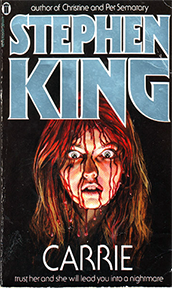Why are we switching?
As the economy squeezes news editors, reporters and producers into new careers, many emerge into the public relations field. Aside from any initial hesitation about “going to the dark side,” it can be a smooth glide from one form of information delivery to another.
That was my experience after three decades on editing desks in New York, New Jersey and Michigan — my version of a path many others have taken successfully. “I was hired for my first PR position many years ago because of my journalism experience, and I know many others who have made a successful transition,” says Christopher Trela, an independent practitioner in Costa Mesa, Calif.
A good fit?
But one veteran PR executive in Washington, D.C., thinks we’re generally ill-prepared for the profession. Richard Mintz, owner and managing director of The Harbour Group in Washington, D.C., boldly waves a red flag at PR aspirants whose first career involved bylines and the Five W’s.
“Journalists by their nature don’t make great advocates or public relations people because they’re trained to be objective rather than to take sides,” he told Atlantic magazine blogger Jeffrey Goldberg in January 2010. “They also tend to work alone, and they have no business experience.”
Those comments in a post headlined The Great Journalism Exodus score one out of three for accuracy, based on my background and that of other newsroom emigrants. Overlap “between the two fields is galactic,” says Jill Parker Landsman, who brought seven years of reporting and editing experience to her position as communications director at the Northern Virginia Association of Realtors.
Business imperatives are recognized
Direct business administration know-how typically isn’t a tool carried out of newsrooms, it’s true. That’s not to say all journalists are clueless about management, marketing and bottom lines – life-and-death issues in their industry. As Goldberg notes at the start of his post: “Friends in the public relations business… tell me they are inundated with calls from journalists looking to escape our profession before it dies, as opposed to after it dies.”
Characterizing journalists as rigidly objective and solitary doesn’t describe professionals accustomed to flexibility, point-of-view narratives and teamwork. While balanced fairness is the goal, journalism requires subjective decisions about themes, sources, word choices, quote selection and presentation sequence. Reporters and editors work closely with photographers, graphic artists, page designers and online producers – a newsroom version of account teams.
Mintz also seems to overlook or devalue reflexes that accompany newsgathering experience.
“I use my skills to help my company make better decisions on how to place stories, land coverage and shape releases that will capture the attention of journalists,” says Ed Garsten, an electronic communication manager who joined Chrysler in 2005 after more than 30 years in journalism. “My colleagues turn to me often and ask, ‘Will journalists buy this?’ That empowers me to be truthful to them…. I’m fitting in very well.” He had worked for CNN, AP and The Detroit News.
Aleta Walther, a marketing communications consultant in San Clemente, is familiar with bias against journalists among some executives. “I had a PR friend, a VP at an agency, tell me that he would never hire a journalist,” she recalls. “In the next breath he asked me if I was available to assist on a new business proposal. I never told him I was a hard-core reporter at one time.”
Steven Forsythe of Peachtree City, Ga., traded newspapers for corporate communications more than 30 years ago — and still uses a vivid memory as a reality check. “Many PR people would have been dismayed to see the comments we wrote on their inane releases or photos, posted on a newsroom bulletin board for laughs. I have tried to make sure that never happens to mine,” says the top communicator at Global Aviation Holdings near Atlanta.
Credibility with clients
From San Diego, agency CEO Tom Gable reports job inquiries from “lots of terrific talent” leaving the Los Angeles Times, San Diego Union-Tribune and other West Coast papers. “Relating to journalists is just one factor” in their favor,” says Gable, a former business editor of his city’s daily. “I would rate writing and story-telling abilities higher, as well as credibility in being able to tell a client that the story they think belongs on the front page of the WSJ probably would only make [a trade journal’s] new product briefs.”
Another Californian, former newspaper reporter and editor Michele M. Horaney, believes “PR people with a news coverage background have a leg up over folks who got PR degrees and have never written a news story.” Horaney, now communications director of a nonprofit political research organization in Berkeley, adds: “Being able to write and do research from an ‘in the news’ and ‘in the public’s interest’ perspective is invaluable.”
Naturally, switching career tracks can present a few hurdles at first. “The hardest thing for journalists to learn is to write in someone else’s voice,” comments print veteran Retha Lindsey Fielding, chief communication officer at a nonprofit in Austin, Texas. “It just doesn’t feel right at first.”
Former TV news producer Bev Carlson, a board member of Nebraska’s chapter of the Public Relations Society of America (PRSA), knows “many former newsroom co-workers who have transitioned into highly successful public relations careers. It all depends on the person and their willingness to be flexible and learn.” Carlson adds from Omaha: “Former journalists are outstanding in the research aspect of putting together PR strategy. And since journalists — the good ones — have the innate training to be quick studies on anything, the learning curve for the other aspects of the job
doesn’t have to be painful.”
Speaking of adjustment pain, Garsten at Chrysler acknowledges he “still can’t stand the stultifying pace of decision-making” outside the world of deadlines every minute. Overall, these career re-inventors take pride in something I also appreciate: Delivering clear, accurate, timely information that audiences can use. The content differs, obviously, but the challenges do resemble those of journalism.



